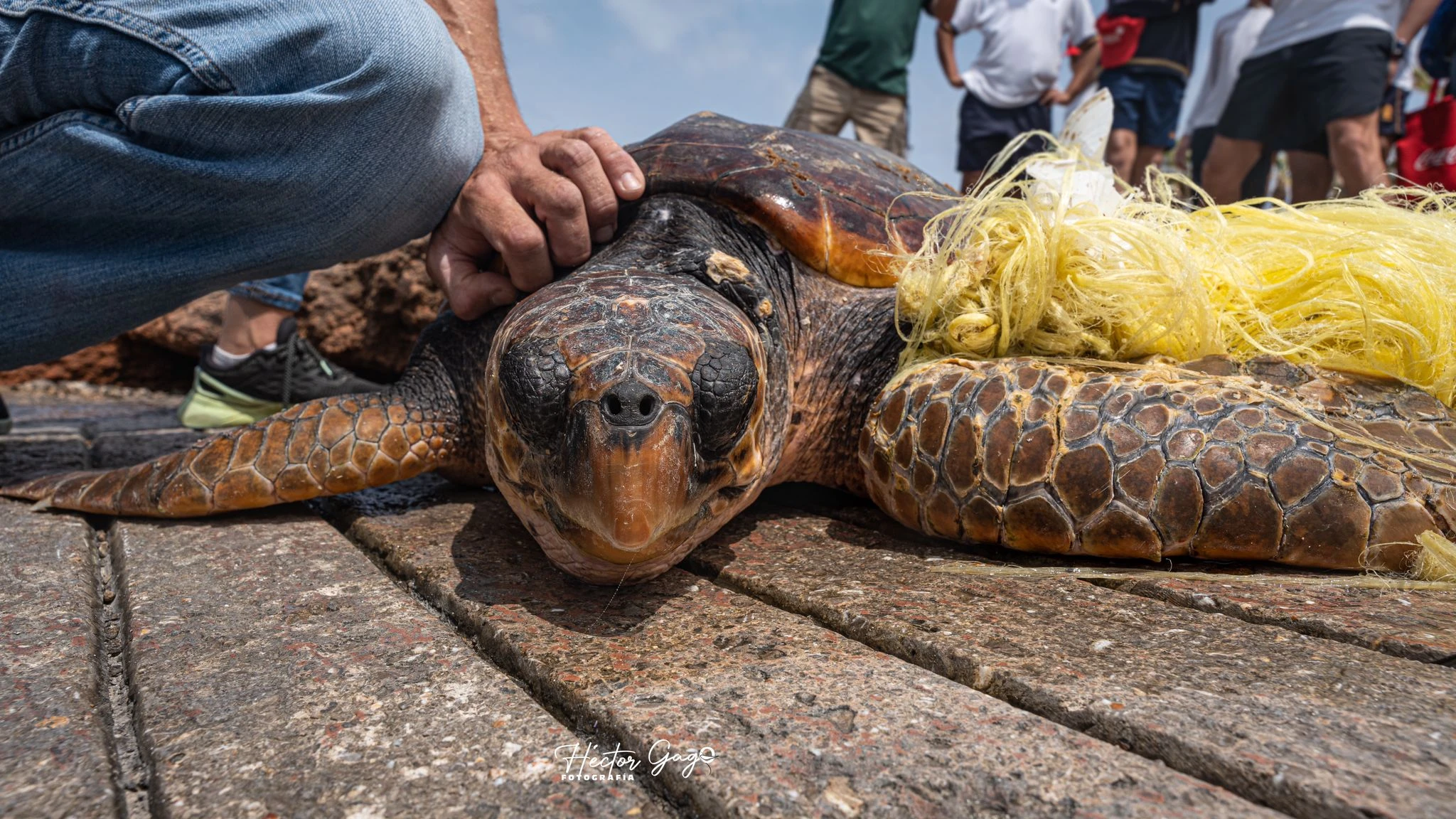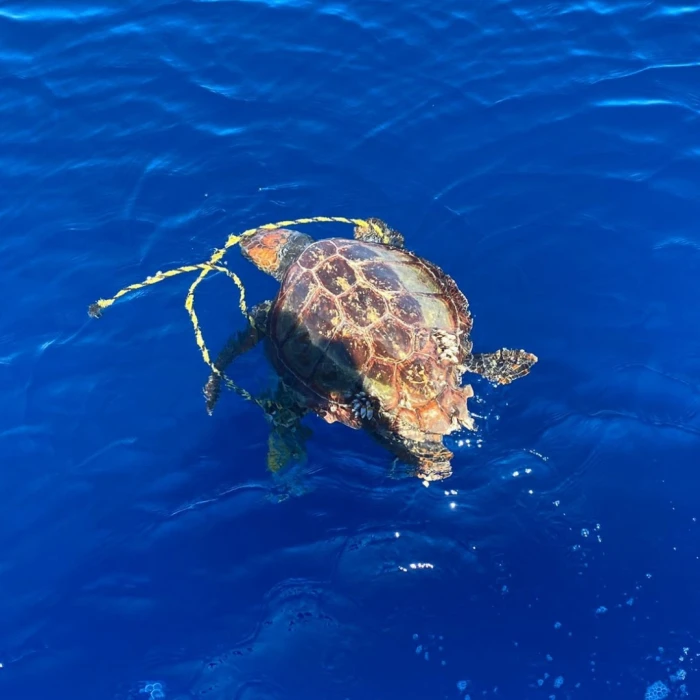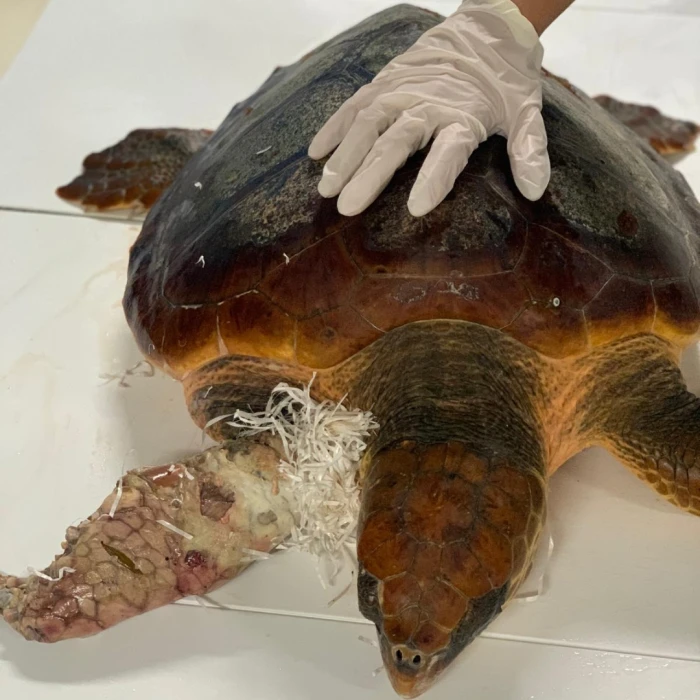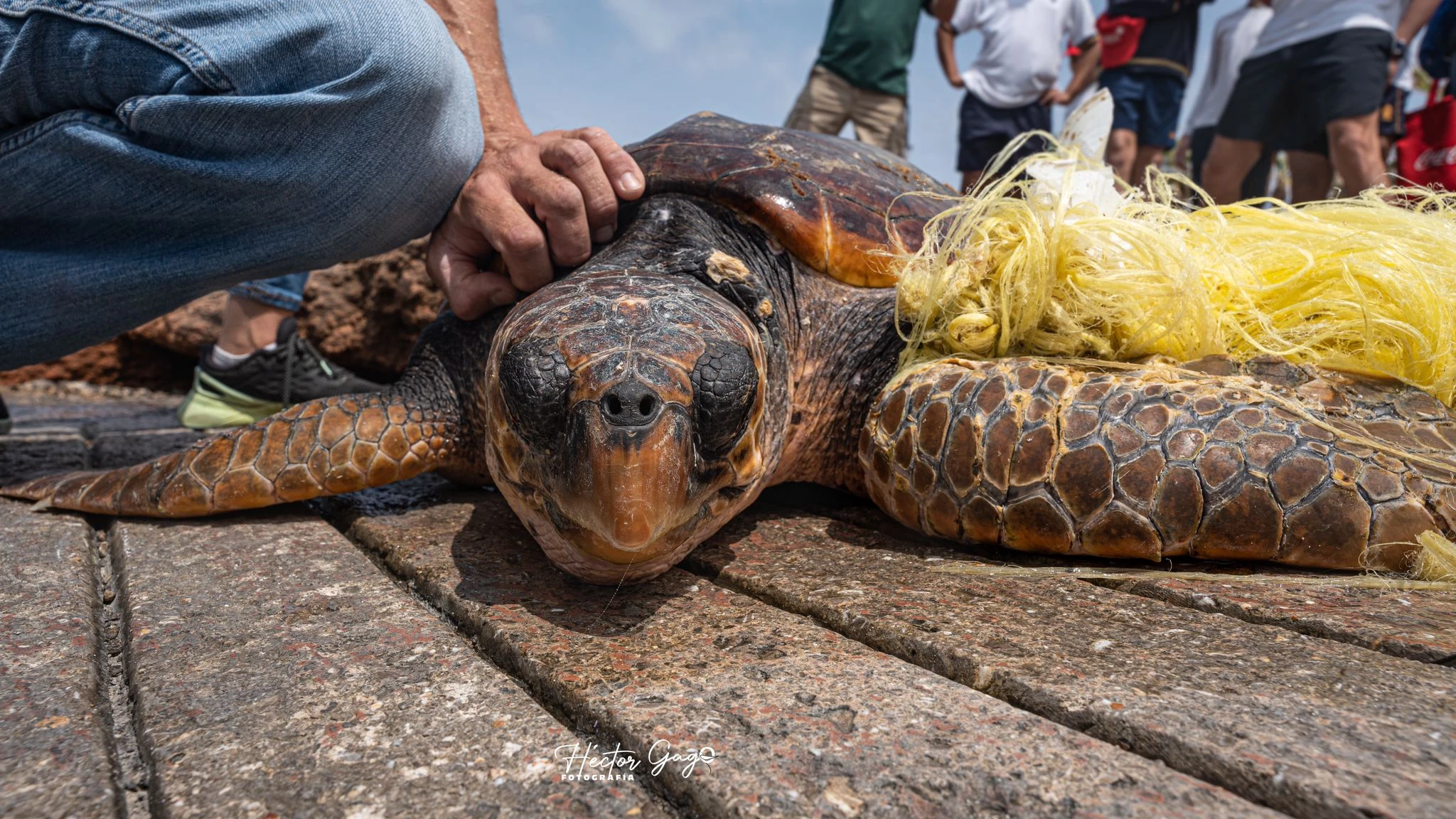The sea turtles that inhabit the Balearic Sea face numerous threats, and one of the most serious is entanglement in abandoned or lost fishing gear, known as “ghost nets”. This phenomenon, the result of human activity, poses a serious danger to these iconic species.
What is entanglement and why is it so dangerous?
Entanglement occurs when the sea turtles become trapped in the remains of nets, rope or plastic. These materials can wrap around their flippers, necks or shells, restricting movement and causing various types of injuries, some of which are extremely serious. In many cases, the pressure exerted by these bindings disrupts blood circulation, leading to necrosis of the affected limbs. Without timely action, the consequences can be fatal.
In 2024, and taking into consideration the known causes, 65% of the turtles rescued in the Balearic Sea were entangled. This highlights the scale of the problem and the need for urgent measures to be put in place.
What to do if you come across an entangled sea turtle
If you come across an entangled sea turtle, it is extremely important to follow a specific protocol in order to ensure it will survive:
- Call 112 and report the situation. They will activate the official rescue protocol.
- If you are on a boat, bring it on board, provided this is both possible and safe.
- Do not remove any ropes, hooks, fishing lines, plastic or nets that are tightly wrapped around any part of the sea turtle’s body. Although it may seem like you are helping, you could in fact cause more serious harm.
- You must also avoid turning it over. Incorrect handling can cause internal injuries and increase its stress level.
- Protect the animal while waiting for the rescue team to arrive. Place it in the shade and cover it with a damp towel, leaving the head and cloaca exposed so it can breathe and regulate its temperature.

The consequences of entanglement in sea turtles
Entanglement does not only cause obvious physical injuries. Turtles that become entangled may experience the following:
- Extreme stress: the inability to move freely and the constant struggle to break free create high levels of stress.
- Infections: open wounds may become infected, further deteriorating the turtle’s health.
- Malnutrition: when entangled, many turtles are unable to feed properly, often resulting in emaciation.
- Amputations: in the most severe cases, the only option is to amputate the affected limb to prevent systemic infection. In fact, this is the primary clinical consequence of entanglement.
Most sea turtles that become entangled can be treated and released back into the sea, even if they have lost a flipper. In fact, turtles with missing flippers have been observed nesting on beaches.
The importance of monitoring and rehabilitation
Once rescued, the sea turtles are taken to Palma Aquarium Foundation’s Recovery Centre, where they receive specialised veterinary care. Diagnostic tests such as blood analyses and X-rays are carried out to assess their health. In some cases, satellite-tracking devices are fitted to monitor their adaptation to the natural environment following release.
This monitoring process provides valuable information about their migration patterns and behaviour, allowing for more effective conservation strategies to be drawn up.


Basuraleza: a growing threat
The Spanish term basuraleza – literally “trashscape” – refers to the waste generated by humans that ends up in natural settings. In the case of the sea, this includes plastics, ghost-fishing nets and other debris that constitute a constant danger for marine life. The accumulation of this waste not only affects sea turtles, but also other marine species, upsetting the ecosystem’s delicate balance.
How you can help
Protecting sea turtles is a shared responsibility. Here are some of the actions you can take:
- Don’t throw rubbish into the sea or on beaches: every piece of waste counts.
- Take part in clean-up sessions: help keep our seas and oceans free of debris.
- Report strandings: if you spot a sea turtle in danger, follow the protocol and call 112.
- Educate and raise awareness: share information about the importance of protecting marine life.
This study is part of the project for the conservation and protection of endangered marine species, including sea turtles, cetaceans and sharks, in the Balearic Islands (OCEMIB by its Spanish initials). The initiative is supported by the Biodiversity Foundation of the Spanish Ministry for Ecological Transition and the Demographic Challenge (MITECO by its Spanish initials) under the framework of the Recovery, Transformation and Resilience Plan (PRTR by its Spanish initials), financed with European Union's NextGenerationEU funds.
In addition, the service is managed by COFIB, which is part of the Species Protection Services of the Balearic Islands’ Regional Ministry of Agriculture, Fishing and the Environment.
Sea turtle conservation in the Balearic Sea depends on collaboration between institutions, organisations and committed citizens. By following the correct protocols and adopting responsible practices, we can ensure a safer future for these species and for marine biodiversity as a whole.





